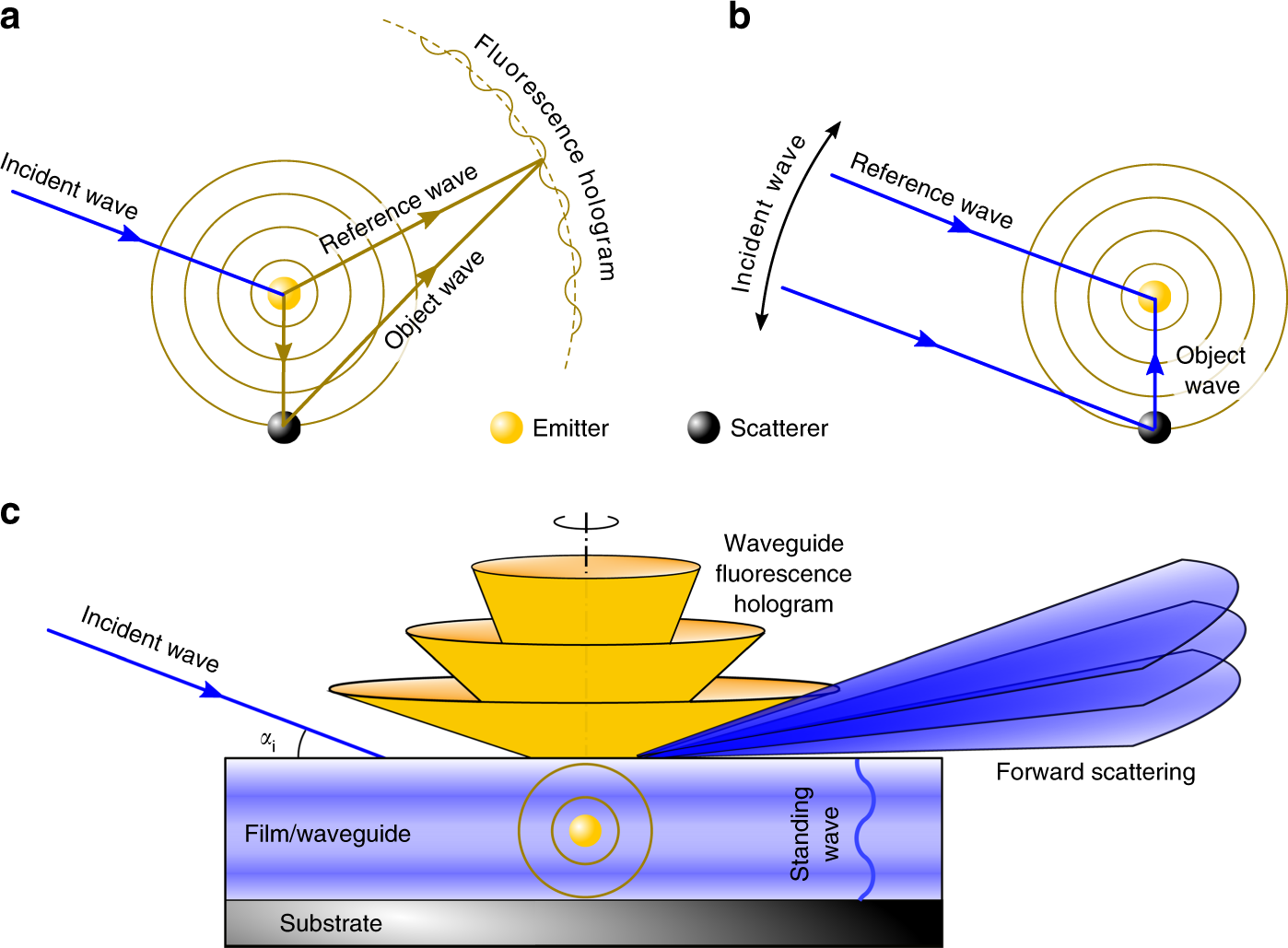
X-ray fluorescence holography in (a) normal mode, (b) inverse mode, and (c) waveguid mode
We introduced X-ray waveguide fluorescence holography (XWFH) based on the waveguiding properties of thin films for probing nanostructures and their kinetics. For the structural reconstruction, we developed a rigorous dynamical-scattering based model-independent algorithm, where the structural profile and its confident intervals are estimated with an efficient Markov-Chain Monte Carlo sampler analogous to the Hamiltonian dynamics in classical mechanics.
Zhang Jiang, et al., Reconstruction of evolving nanostructures in ultrathin films with X-ray waveguide fluorescence holography, Nature Communications 11, 3197 (2020)
DOE Science Highlight: Watching the Evolution of Nanostructures in Thin Films





